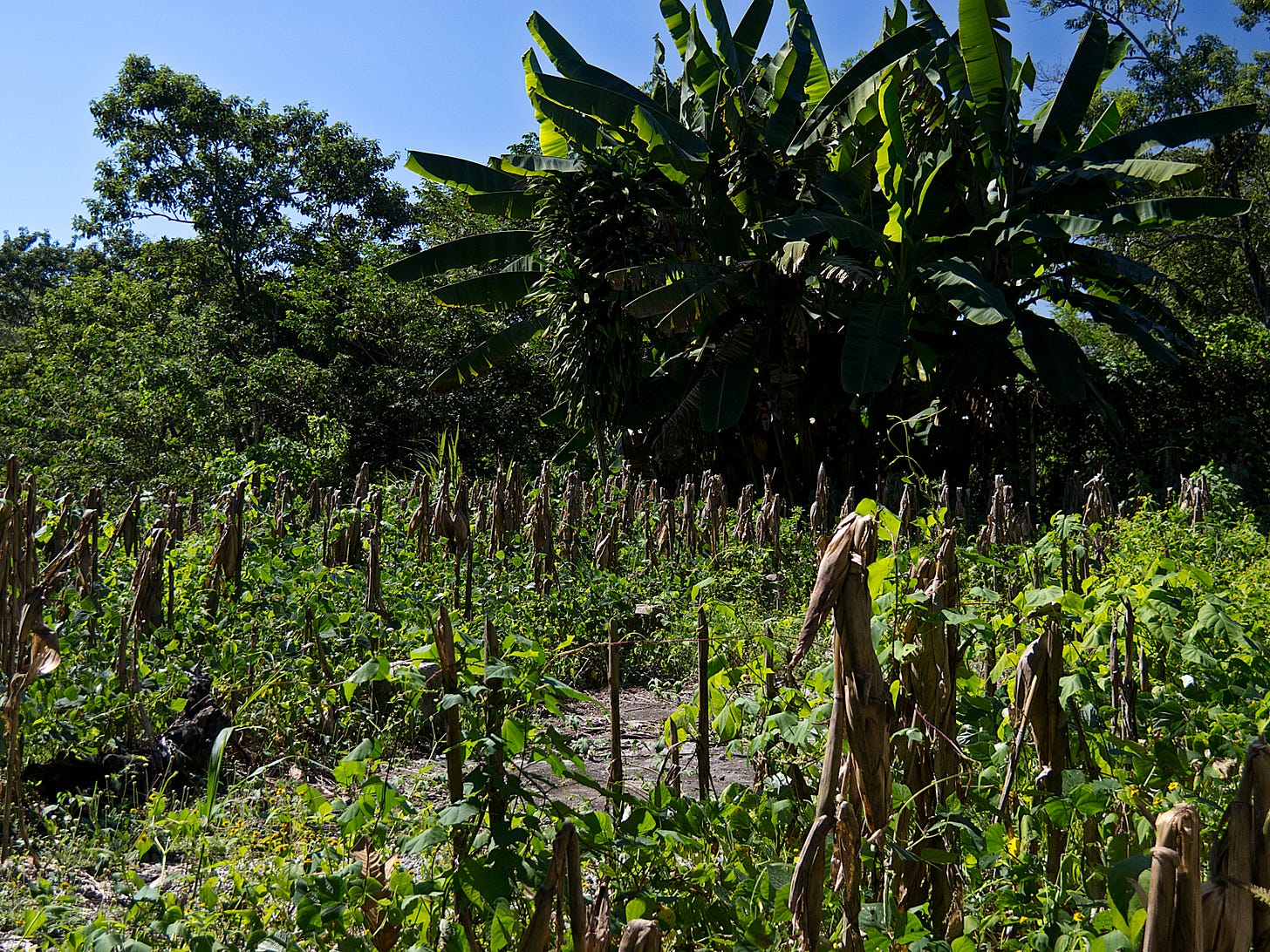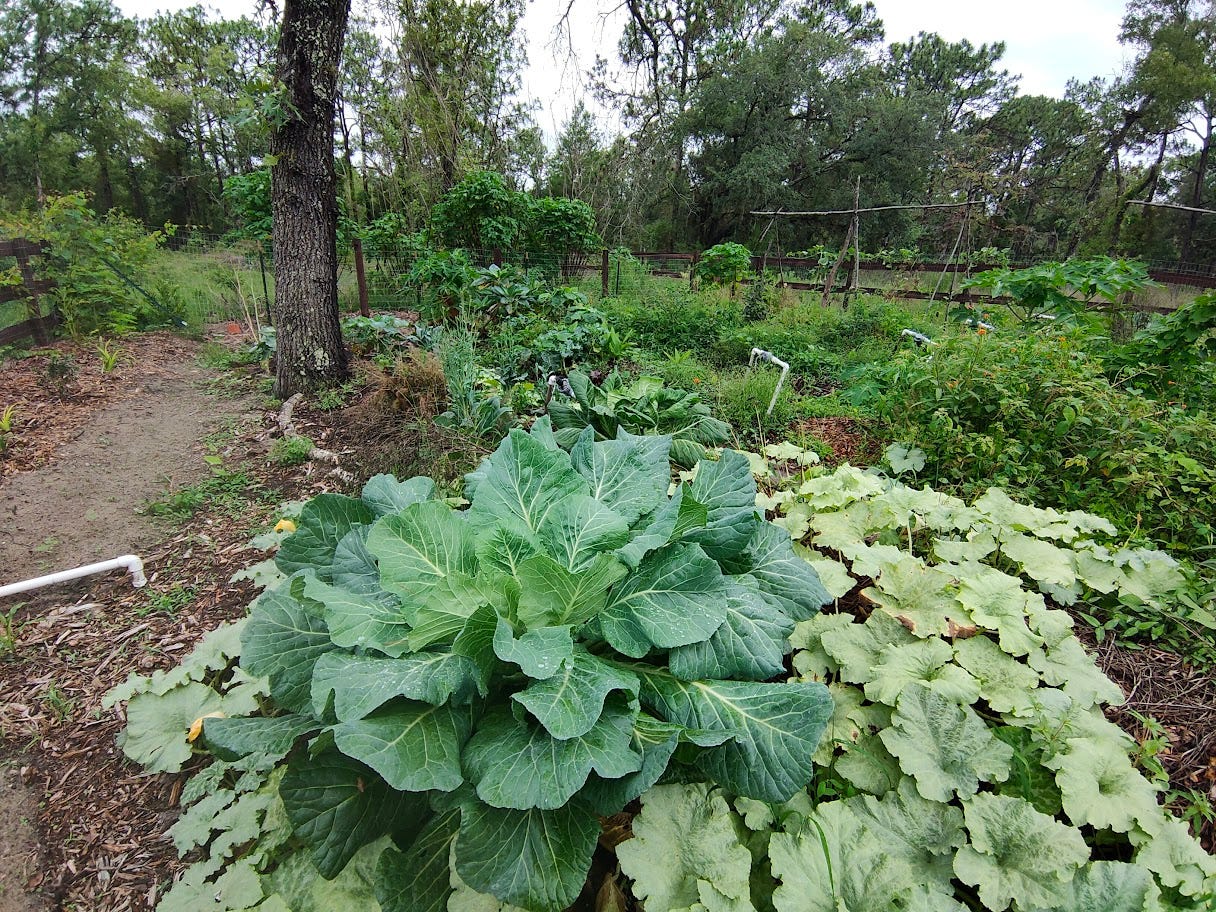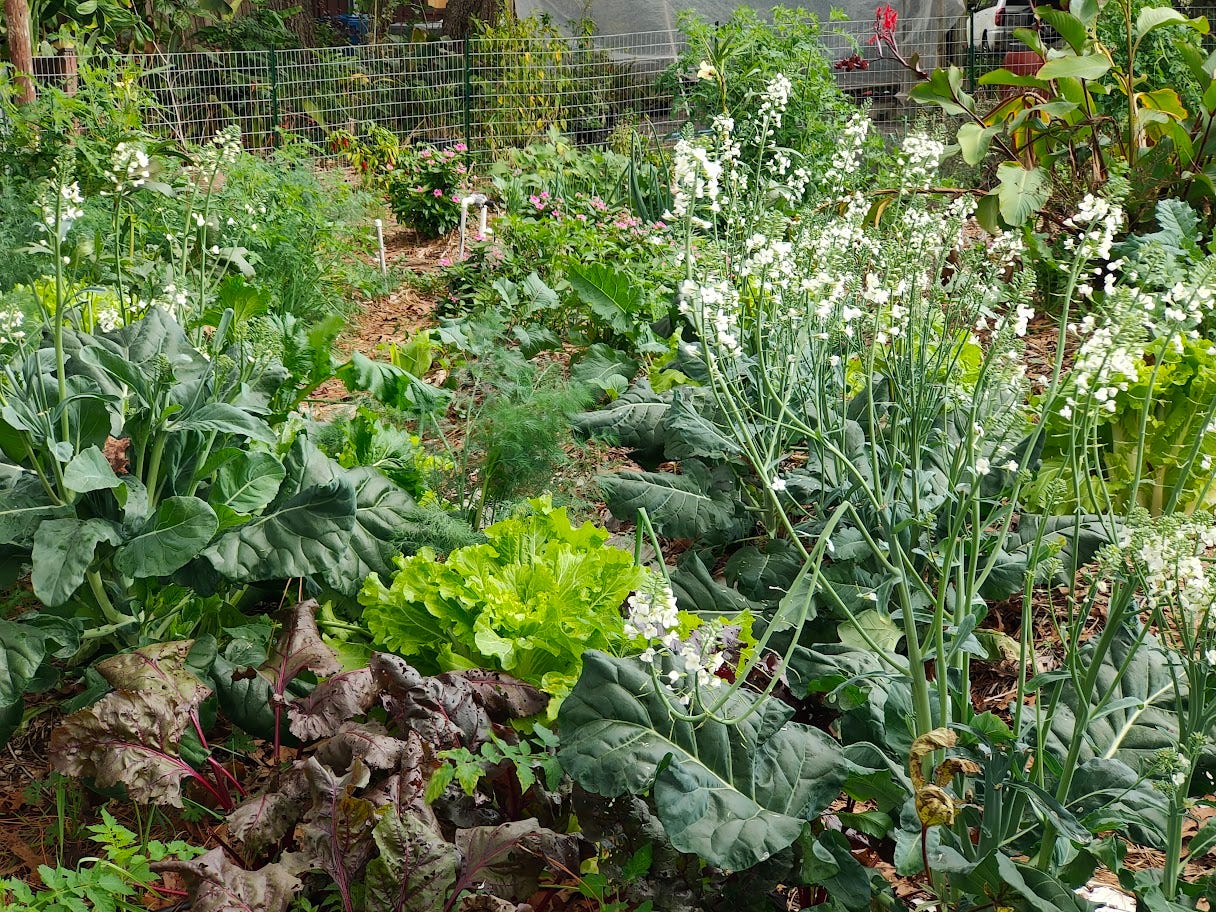How to think like a food forest
The advantages of these food production systems are numerous. By working with nature, one can create a stable abundance of food that keeps on producing with less and less work.
The Art of the Food Forest
Food forests, which are a mix of fruit trees, bushes, herbs, roots, vines, and mushrooms growing in a forest setting, are nothing new. The concept is thousands of years old, developed to a high art by tribes living in jungles. There are many versions of food forests that were developed to be harmonious with the specific ecosystem and lifestyles of individual tribes.
The advantages of these food production systems are numerous. By working with nature, one can create a stable abundance of food that keeps on producing with less and less work. It is a fascinating way to grow food, and there is a certain amount of fun involved in having a forest in your backyard that is dripping with food.
Of course, forests are usually quite large, much bigger than a backyard. So, we tend to call a permaculture system in a smaller space an “edible forest garden.” But you can still use the principles that many tribes have used to create long term abundant food.

Indigenous Tribes of Central America
Indigenous tribes of Central America including the Mayan people developed Milpa, the most sustainable and regenerative forms of intensive agriculture in history. It consisted of slash and burn clearings of a few acres that are filled with corn, beans, squash, tomatoes, sweet potato, and other annual crops.
Around and between these crops, fruit trees like avocados, bananas, and papayas are planted. These clearings are worked for two years, and left fallow (left alone without seeding) for eight years or more. The burning creates very fertile soil that supports years of annual crops, allowing the jungle to regrow, now with a more concentrated selection of fruit trees in that acreage.
Some tribes create these clearings in a circle of fifteen or more, which can take a generation to complete. When the circle is complete, there are now parts of jungle that are full of fruit that has continued to spread its seed throughout the area via animals and birds. A new circle is started, near the first one which now offers an abundance of fruit and nuts.
By working with nature, the tribe has doubled their food supply with no extra work. Imagine a farming method that continues to increase the food supply with the same amount of work.
When botanists examined jungles where this was put into practice, they wondered why there was such a concentration of fruit trees. The answer is a tribe that worked with nature very closely to produce abundance not only for themselves, but for every other living thing in the jungle.
The milpa, in the estimation of H. Garrison Wilkes, a maize researcher at the University of Massachusetts in Boston, "is one of the most successful human inventions ever created."
— Charles C. Mann, 1491: New Revelations of the Americas Before Columbus.
Other Varieties of Food Forests
There are a number of other varieties of food forests. In Vietnam, some villages have retained a form of forest gardening that has sustained their village for hundreds of years. They each tend a food forest maintained by careful observation as opposed to hard work and chemical inputs like imported fertilizers. They plant seeds of the fruit that they eat in places likely to support those plants.
The Vietnamese know their jungle well - when a tree, like a mango, is getting older, they plant a new one in plenty of time to replace the previous one. They plant for abundance, providing food for animals that help ensure the soil stays fertile as well as themselves.
How can we learn from these sustainable methods that created abundant food with little work? Not everybody lives in a lush jungle environment, but these approaches can translate into any ecosystem. There are tribes that have done something similar with sea life, including Indigenous people in Alaska and other cold countries where it is hard to grow, or the Zuni people (people native to the Zuni River valley in New Mexico) and other desert people.
The fundamental key to success is that each tribe closely observed their environment and imitated what nature did in their region to create abundance.
Not every Indigenous tribe used regenerative methods to grow food. Extinction was the price usually paid for not doing so.
It can be helpful to study how the most successful and long-lived Indigenous people managed (or manage, as some are still doing it) their food supply in your region or similar regions. How did they work with nature to ensure their methods were regenerative and would maintain abundance for future generations?
What is nature doing in your own backyard to create abundance?
Bill Mollison traveled the world studying the most successful indigenous forms of agriculture that have maintained high yields over hundreds or thousands of years. The result was an outline of the principles common to each of them, a study called “permanent agriculture,” or “permaculture.”
We teach these principles and how to apply them with a specific set of tools to create abundance in your backyard, regardless of what ecosystem you live in. This goes beyond managing food producing plants and includes water management, buildings, energy, finances, and community building.
The most successful tribes (some of whom resided in major cities and had complex societies) included all these factors in their approach to food growing. Their communities often lasted thousands of years. Thus, “permaculture” came to mean not just permanent agriculture but “permanent culture,” which can be translated to “whole systems design.”
By not just looking at a single item or smaller area, one looks at everything that could be affected by the change that is being considered. This greatly increases the success rate and lowers the chances of future problems.
Integrating food growing with other aspects of one’s life leads to wider abundance and lifestyle choices. We love to share the tools to achieve that with our students. Come and see our selection of courses on the website.
Want to become a Permaculture success? Checkout our online and in person permaculture courses under the direction of Koreen Brennan!
Grow Permaculture Curriculum and Courses:
Are you ready to take your next step in Permaculture? If so, we’ve got you covered from novice to all-star. Our our courses are under the direct supervision of Koreen Brennan, educator, diplomate, and PINA board member.
Online Permaculture Design Course
The internationally recognized Grow Permaculture Online Permaculture Design Course comes with hands-on practical and mentoring. Now more than ever, people have attention on creating more choices and resilience in their lives. We want healthy food, a clean environment, happiness and security for us, our children, and future generations. This course offers practical steps to achieving these things in your own life, regardless of your circumstances. You can get started right away! Sign up now!
In-Person Permaculture Design Course
This is Grow Permaculture’s internationally recognized In-Person Permaculture Design Course. This course will be held in St Petersburg, FL, and at our farm in Brooksville, giving people an opportunity to see permaculture in action on both the farm while also studying in an urban environment. Space is limited sign up today!
Check out our full lineup of Grow Permaculture courses!






